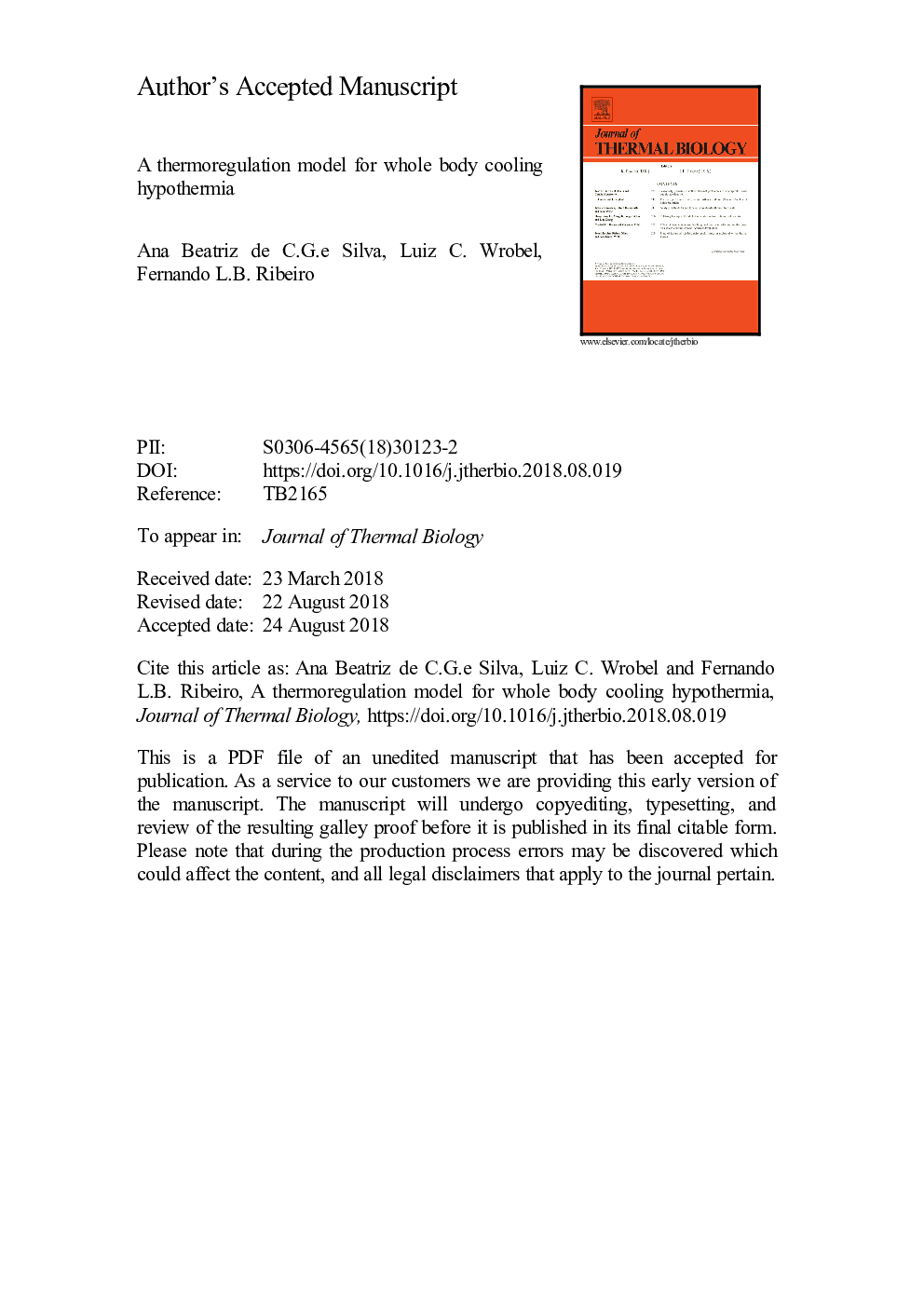| Article ID | Journal | Published Year | Pages | File Type |
|---|---|---|---|---|
| 11029200 | Journal of Thermal Biology | 2018 | 37 Pages |
Abstract
This paper presents a thermoregulation model based on the finite element method to perform numerical analyses of brain cooling procedures as a contribution to the investigation on the use of therapeutic hypothermia after ischemia in adults. The use of computational methods can aid clinicians to observe body temperature using different cooling methods without the need of invasive techniques, and can thus be a valuable tool to assist clinical trials simulating different cooling options that can be used for treatment. In this work, we developed a finite element method (FEM) package using isoparametric linear three-dimensional elements which is applied to the solution of the continuum bioheat Pennes equation. Blood temperature changes were considered using a blood pool approach and a lumped analysis for intravascular catheter methods of blood cooling. Some analyses are performed using a three-dimensional mesh based on a complex geometry obtained from computed tomography medical images, considering a cooling blanket and an intravascular catheter. A comparison is made between the results obtained with the two techniques and the effects of each case in brain temperature reduction in a required period of time, maintenance of body temperature at moderate hypothermia levels and gradual rewarming.
Related Topics
Life Sciences
Agricultural and Biological Sciences
Agricultural and Biological Sciences (General)
Authors
Ana Beatriz C.G. Silva, Luiz C. Wrobel, Fernando L.B. Ribeiro,
